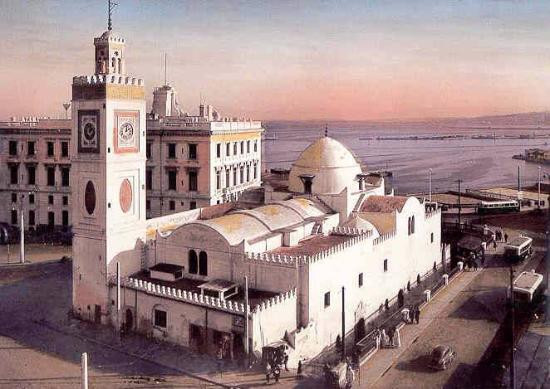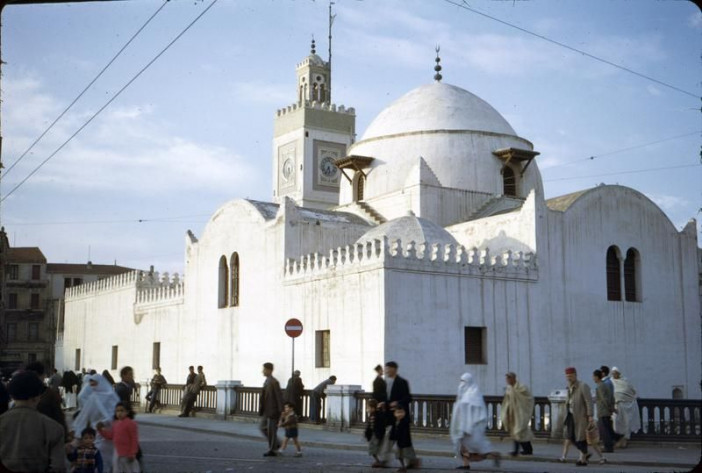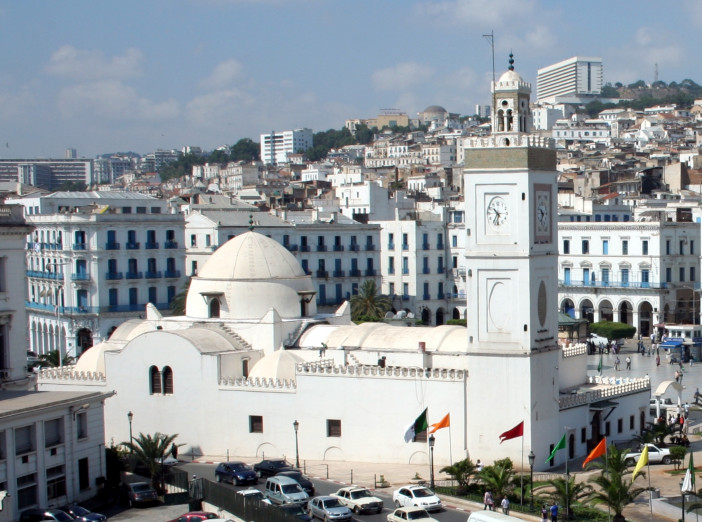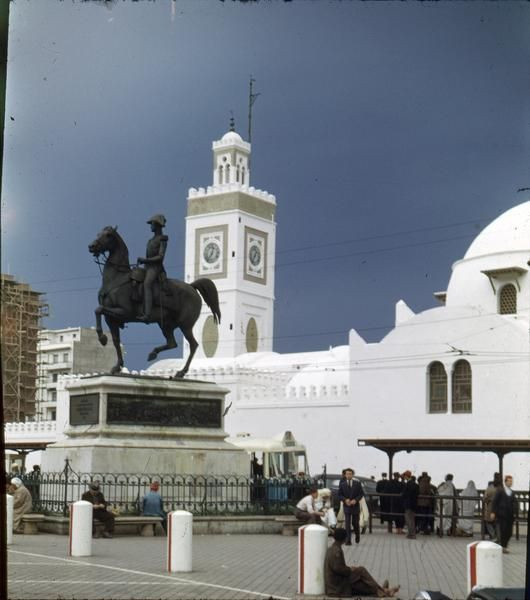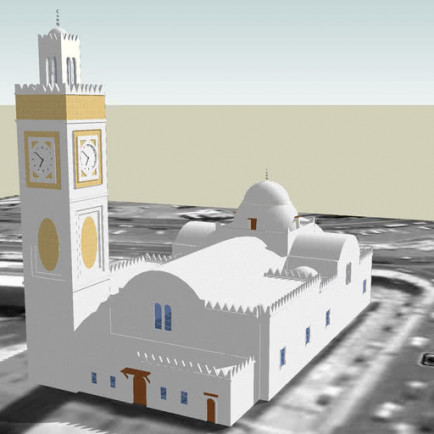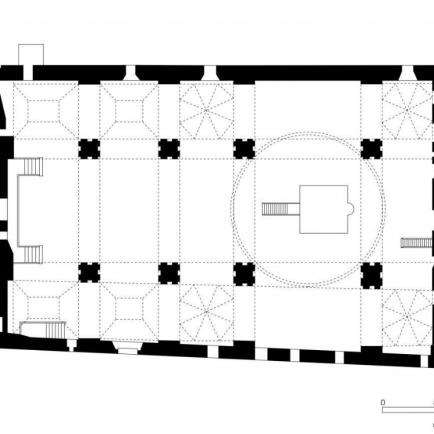the Mosque of the Fisherman's Wharf
History
This Hanafi mosque was built in AH 1070 / AD 1660 at the site of the Bou Anan madrasa. Down by the sea were the small mosque called "Fishermen" (mesdjed el-Haoutin) and the door to the sea (bab al-Bahr).
Urban and Architectural
This mosque is one of the most important buildings of the Ottoman period and is still today the great Hanafi temple. Some of its forms evoke Byzantine art. It would have been designed by the Muslim master builder al-Hâjj Habîb who conformed to Ottoman models, and not, as legend has it, by a Christian slave who would have marked this mosque with the symbol of his faith.
Its plan is basilical, its three aisles perpendicular to the qibla wall are carved by five bays. The central nave and the penultimate bay are raised forming at roof level a Latin cross, the crossing of the arms of which is overhung by a cupola, while the side naves are covered with cupolettes and flat terraces surmounting cloister arches , lightened at their base with broken arches.
Description
The mosque did not have minaret at the outset as we know, thanks to an inscription engraved on marble and built in the prayer hall, that the minaret was only built in 749 / AD 1348.
References
https://www.wikiwand.com/fr/Mosqu%C3%A9e_de_la_P%C3%AAcherie
https://fr.wikipedia.org/wiki/Mosqu%C3%A9e_de_la_P%C3%AAcherie
Details
الموقع
Place des martyrs, Rue Bab El Oued, Casbah 16000, Algérie
عدد المصليين
500
المالك / المتبرع
Dey Mustapha Pacha
تاريخ البناء
1660
Area
1500
الرسومات المعمارية
الخريطة
History
This Hanafi mosque was built in AH 1070 / AD 1660 at the site of the Bou Anan madrasa. Down by the sea were the small mosque called "Fishermen" (mesdjed el-Haoutin) and the door to the sea (bab al-Bahr).
Urban and Architectural
This mosque is one of the most important buildings of the Ottoman period and is still today the great Hanafi temple. Some of its forms evoke Byzantine art. It would have been designed by the Muslim master builder al-Hâjj Habîb who conformed to Ottoman models, and not, as legend has it, by a Christian slave who would have marked this mosque with the symbol of his faith.
Its plan is basilical, its three aisles perpendicular to the qibla wall are carved by five bays. The central nave and the penultimate bay are raised forming at roof level a Latin cross, the crossing of the arms of which is overhung by a cupola, while the side naves are covered with cupolettes and flat terraces surmounting cloister arches , lightened at their base with broken arches.
Description
The mosque did not have minaret at the outset as we know, thanks to an inscription engraved on marble and built in the prayer hall, that the minaret was only built in 749 / AD 1348.


